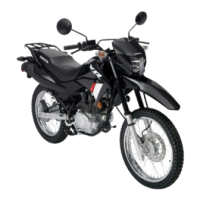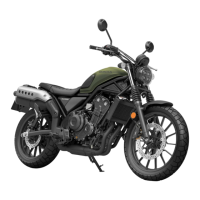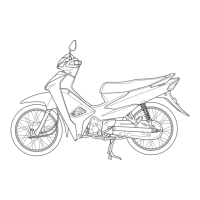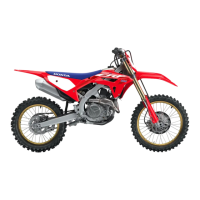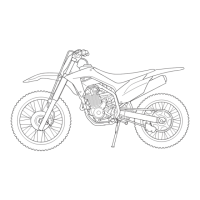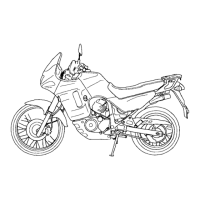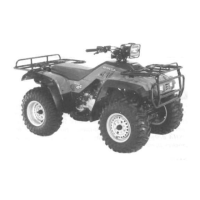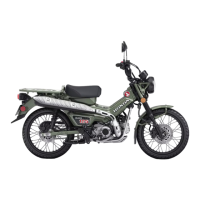
 Loading...
Loading...
Do you have a question about the Honda TRAIL125 2023 and is the answer not in the manual?
| Engine Type | 124cc air-cooled single-cylinder four-stroke |
|---|---|
| Bore and Stroke | 52.4mm x 57.9mm |
| Compression Ratio | 10.0:1 |
| Final Drive | Chain |
| Front Tire | 80/90-17 |
| Rear Tire | 80/90-17 |
| Rake (Caster Angle) | 27° |
| Trail | 3.1 inches |
| Wheelbase | 49.4 inches |
| Seat Height | 31.5 inches |
| Curb Weight | 259 pounds |
| Fuel Capacity | 1.4 gallons |
| Induction | PGM-FI |
| Ignition | Fully transistorized |
| Transmission | Four-speed |
| Front Suspension | Telescopic fork |
| Rear Suspension | Twin shock |
| Front Brake | Single 220mm disc |
| Rear Brake | Single 190mm disc |
Essential guidelines for safe riding and vehicle operation.
Location and importance of safety labels on the vehicle.
Crucial precautions for rider safety, including apparel.
Essential precautions for operating the vehicle safely.
Guidelines and warnings for vehicle accessories and modifications.
Instructions and warnings for proper vehicle loading.
Step-by-step guide to basic vehicle operation.
Identification and location of key vehicle parts.
Explanation of the instrument panel and its indicators.
Details on various warning and indicator lights.
Function and operation of vehicle controls and switches.
Operation of the ignition switch and key positions.
Procedure for starting the vehicle's engine.
How to shift gears and recommended shift points.
Guide to refueling the vehicle and fuel guidelines.
Information on seat, helmet holder, and tool kit.
Why maintenance is crucial and the recommended schedule.
Essential checks and procedures for vehicle upkeep.
Procedures for battery cleaning, charging, and replacement.
Checking and changing engine oil and filter.
Checking brake fluid levels and pad wear.
Inspecting tires for pressure, wear, and damage.
Inspecting, cleaning, and lubricating the drive chain.
Adjusting the rear suspension for optimal performance.
Solutions for when the engine won't start or the starter motor fails.
Explains PGM-FI and ABS indicator light issues.
What to do if the fuel gauge indicator shows an error.
Guidance on repairing or replacing punctured tires.
Troubleshooting dead batteries, blown fuses, and light bulbs.
Addressing unstable engine operation due to clogged filters.
Location and importance of VIN and engine serial numbers.
Explanation of vehicle emission standards and components.
Function and protection of the vehicle's catalytic converters.
Information on obtaining service and owner manuals.
Details on vehicle warranty coverage and service procedures.
How to contact Honda customer service and dealers.
Procedure for reporting vehicle safety defects to authorities.
Key specifications for vehicle dimensions and weight.
Technical data for tires, fluids, and spark plugs.
Specifications for vehicle bulbs, fuses, and torque settings.
